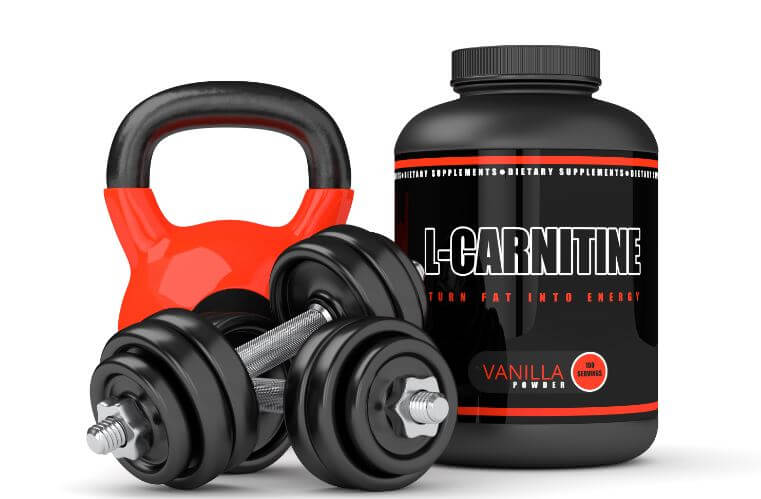Ergogenic Aids Unclear Scientific Evidence: Category B

The Australian Institute of Sports (AIS) has classified dietary supplements (specifically ergogenic aids used by athletes) according to their levels of scientific evidence.
The term “scientific evidence” refers to everything that has been proven through scientific knowledge. The product has been investigated and its functions and effects on the body have been categorized.
This is what we have discovered about supplements in Category B, and according to AIS classification. These are dietary products that have a possible function in the sports world but the evidence is not solid enough to be supported by the scientific community in general.
Let’s start from the beginning…
“Ergogenesis” is the group of physiological processes through which the body produces energy. In the world of sports, the efficiency in the production of energy is a key factor. Currently, on the market, we can find several different products that may give a performance advantage. These are the so-called ergogenic aids.

When we decide to try this kind of product it’s important to seek professional advice. A specialist will help us choose the supplements that meet our needs in the best way.
Taking ergogenic aids naturally or as a supplement?
It’s important to keep in mind that these products do not replace training and discipline. We’ll only achieve noticeable results in a competition if these ergogenic aids are taken within a sports training frame.
Anytime you are offered a dietary supplement you must ask yourself two questions: what benefits will it produce? What are the side effects of taking it?
Supplement Classification
| Category | Scientific Evidence and uses | Supplements |
| A- Approved Supplements |
| -Sports drinks (Drinks with carbohydrates and electrolytes)
-Sport Gels -Sport Bars -Calcium Supplements -Iron Supplements -Probiotics for Immunological aid -Multivitamins and minerals –Vitamin D –Electrolyte replacement drinks –Creatine -Bicarbonate –Beta-alanine |
| B- Supplements with low evidence |
-Research -As medical treatment controlled by a professional
| -C and E antioxidants
-L-Carnitine -Beta-hydroxy-beta-methyl butyrate –Glutamine –Glucosamine -Quercetin -Curcumin -Exotic berries (Acai, Goji. etc.) -Glutamine -Other polyphenols, antioxidants, and anti-inflammatories
|
| C-Supplements with hardly any scientific evidence |
-The individual must be aware of the risks and establish safety rules -Vendors must issue warranty guidelines -Must be under professional supervision
| -Ribose
–Lactaway -Coenzyme Q10 -Vitamins not included in Category A -Ginseng -Peroxide -Medium-chain triglyceride, MCT -Pyruvate -Everything else (If not found in either Group A or B is probably in this category)
|
| D- Banned supplements | Banned
(high risk of positive doping test)
| Stimulants:
-Ephedrine -Strychnine Prohormones or Hormone Boosters: -DHEA Agonists Beta- 2 adrenergic: -Higenamina Others: -Glycerol
|
In this article, we’ll focus on those in category B, which have some scientific evidence. These are related to specific properties and functions but further scientific research is necessary in order to corroborate them. Next, we’ll analyze ergogenic aids (Cat.B) which currently have the most research.
L-Carnitine
L-Carnitine’s physiological function is to carry fatty acids to the interior of the mitochondria. The hypothesis around this product is that it will increase fatty acid transportation above physiological levels, to its oxidation. This implies an increase in glycogen reserves.

It’s believed that 2-4 grams per day of L-Carnitine, along with 170 grams of simple carbohydrates (stimulate insulin production), could produce effects.
HMB (Beta-hydroxy beta-methyl butyrate)
There is a hypothesis which states that it could inhibit muscular protein degradation. Therefore, an athlete’s mass and strength would increase. Specifically, in cyclists, it could increase their maximum oxygen volume. (VO2max)
Glutamine
This substance stimulates the glycogen synthetase enzyme, in other words, resynthesizes glycogen reserves. It can also be considered to be immunomodulatory since it could help prevent infections.
Glucosamine
It’s expected that this product can be proven effective in repairing cartilage. We could prevent joint pain and injury in sports with high impact (footing, tennis elbow, long jump, etc.)
The Australian Institute of Sports (AIS) has classified dietary supplements (specifically ergogenic aids used by athletes) according to their levels of scientific evidence.
The term “scientific evidence” refers to everything that has been proven through scientific knowledge. The product has been investigated and its functions and effects on the body have been categorized.
This is what we have discovered about supplements in Category B, and according to AIS classification. These are dietary products that have a possible function in the sports world but the evidence is not solid enough to be supported by the scientific community in general.
Let’s start from the beginning…
“Ergogenesis” is the group of physiological processes through which the body produces energy. In the world of sports, the efficiency in the production of energy is a key factor. Currently, on the market, we can find several different products that may give a performance advantage. These are the so-called ergogenic aids.

When we decide to try this kind of product it’s important to seek professional advice. A specialist will help us choose the supplements that meet our needs in the best way.
Taking ergogenic aids naturally or as a supplement?
It’s important to keep in mind that these products do not replace training and discipline. We’ll only achieve noticeable results in a competition if these ergogenic aids are taken within a sports training frame.
Anytime you are offered a dietary supplement you must ask yourself two questions: what benefits will it produce? What are the side effects of taking it?
Supplement Classification
| Category | Scientific Evidence and uses | Supplements |
| A- Approved Supplements |
| -Sports drinks (Drinks with carbohydrates and electrolytes)
-Sport Gels -Sport Bars -Calcium Supplements -Iron Supplements -Probiotics for Immunological aid -Multivitamins and minerals –Vitamin D –Electrolyte replacement drinks –Creatine -Bicarbonate –Beta-alanine |
| B- Supplements with low evidence |
-Research -As medical treatment controlled by a professional
| -C and E antioxidants
-L-Carnitine -Beta-hydroxy-beta-methyl butyrate –Glutamine –Glucosamine -Quercetin -Curcumin -Exotic berries (Acai, Goji. etc.) -Glutamine -Other polyphenols, antioxidants, and anti-inflammatories
|
| C-Supplements with hardly any scientific evidence |
-The individual must be aware of the risks and establish safety rules -Vendors must issue warranty guidelines -Must be under professional supervision
| -Ribose
–Lactaway -Coenzyme Q10 -Vitamins not included in Category A -Ginseng -Peroxide -Medium-chain triglyceride, MCT -Pyruvate -Everything else (If not found in either Group A or B is probably in this category)
|
| D- Banned supplements | Banned
(high risk of positive doping test)
| Stimulants:
-Ephedrine -Strychnine Prohormones or Hormone Boosters: -DHEA Agonists Beta- 2 adrenergic: -Higenamina Others: -Glycerol
|
In this article, we’ll focus on those in category B, which have some scientific evidence. These are related to specific properties and functions but further scientific research is necessary in order to corroborate them. Next, we’ll analyze ergogenic aids (Cat.B) which currently have the most research.
L-Carnitine
L-Carnitine’s physiological function is to carry fatty acids to the interior of the mitochondria. The hypothesis around this product is that it will increase fatty acid transportation above physiological levels, to its oxidation. This implies an increase in glycogen reserves.

It’s believed that 2-4 grams per day of L-Carnitine, along with 170 grams of simple carbohydrates (stimulate insulin production), could produce effects.
HMB (Beta-hydroxy beta-methyl butyrate)
There is a hypothesis which states that it could inhibit muscular protein degradation. Therefore, an athlete’s mass and strength would increase. Specifically, in cyclists, it could increase their maximum oxygen volume. (VO2max)
Glutamine
This substance stimulates the glycogen synthetase enzyme, in other words, resynthesizes glycogen reserves. It can also be considered to be immunomodulatory since it could help prevent infections.
Glucosamine
It’s expected that this product can be proven effective in repairing cartilage. We could prevent joint pain and injury in sports with high impact (footing, tennis elbow, long jump, etc.)
All cited sources were thoroughly reviewed by our team to ensure their quality, reliability, currency, and validity. The bibliography of this article was considered reliable and of academic or scientific accuracy.
- Thein, L. A., Thein, J. M., & Landry, G. L. (1995). Ergogenic aids. Physical Therapy. https://doi.org/10.1093/ptj/75.5.426
- Juhn, M. S. (2003). Popular Sports Supplements and Ergogenic Aids. Sports Medicine. https://doi.org/10.2165/00007256-200333120-00004
- Pesta, D. H., Angadi, S. S., Burtscher, M., & Roberts, C. K. (2013). The effects of caffeine, nicotine, ethanol, and tetrahydrocannabinol on exercise performance. Nutrition and Metabolism. https://doi.org/10.1186/1743-7075-10-71
- McNaughton, L. R., Siegler, J., & Midgley, A. (2008). Ergogenic effects of sodium bicarbonate. Current Sports Medicine Reports. https://doi.org/10.1249/JSR.0b013e31817ef530
- Cermak, N. M., & Van Loon, L. J. C. (2013). The use of carbohydrates during exercise as an ergogenic aid. Sports Medicine. https://doi.org/10.1007/s40279-013-0079-0
This text is provided for informational purposes only and does not replace consultation with a professional. If in doubt, consult your specialist.








